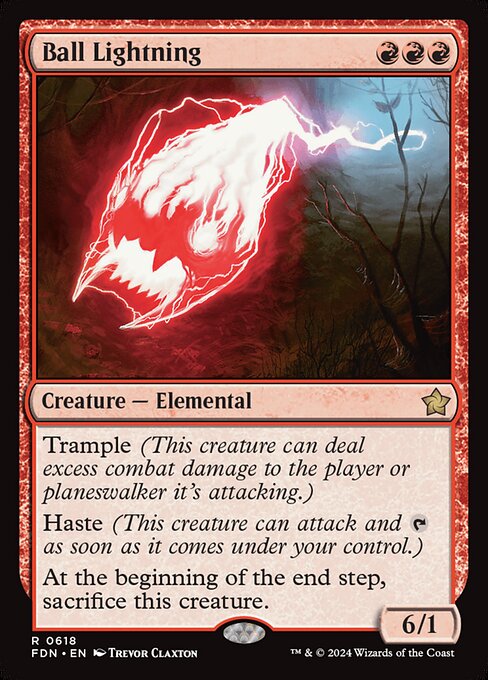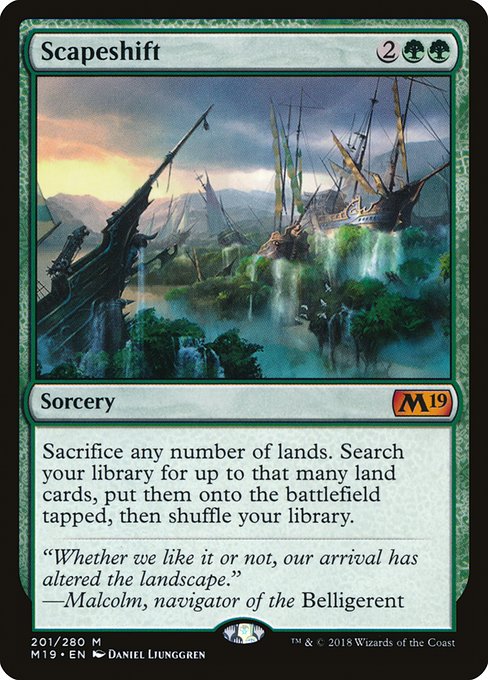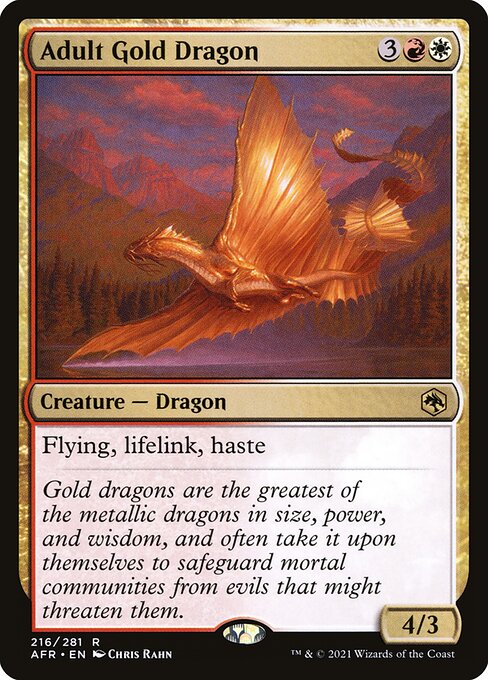Cover image: Into the Core by Whit Brachna
Magic’s core sets have always been a hard sell for enfranchised players. Many already have the cards from earlier printings; add in the ugly white borders and simplified Limited formats, and Magic’s tournament players ignored these sets unless forced to draft. Each base set from Fifth Edition through Tenth Edition tried something new to drive sales—e.g., Sixth Edition’s new rules, Tenth Edition’s black borders. Wizards never landed on a model that satisfied every core player demographic, leading to significant changes to the Core Set in 2009.
Toward the end of this era, packs languished on the shelves of local gaming stores and drafts failed to fire. The only interesting part of a Core Set release was seeing what would remain in Standard and what would rotate out—and even this was stale by Tenth Edition, as the painlands were now de rigeur and most long-term players were tired of opening the same cards every couple of years. We’d occasionally get Hypnotic Specter or Serra Angel or cycle of Legendary creatures, but these once-titanic staples of tournament Magic were outclassed and, if anything, decreased the appeal of the set.
Magic was still a force in the gaming world, but the ’90’s boom was over, and a series of alienating sets (Time Spiral through Eventide) had resulted in decreased sales for the game. Wizards refocused on converting new players by changing the Core Set model from all-reprints to selected reprints and new cards designed to resonate with people familiar with fantasy, but not perhaps with Magic. M10 was announced with much fanfare—this article is worth reviewing, as it spotlights the philosophy of the new Core Set. Where once Ball Lightning was removed from the Base Set for being too complicated, the new Core Set premiered with it as a featured card. Gone were white borders and “Advanced” product branding and sludgy Limited environments; instead, Core Set were full-fledged Magic sets.

Most importantly for Wizards, this meant that enfranchised and tournament players had to spend more. Previously, once you had your set of Birds of Paradise, City of Brass, and your painlands, you didn’t need to spend a dime on Base Set packs. With the new Core Set model, though, not only would old school players need to pick up the newly printed cards, they would also be more inclined to draft or crack packs. Suddenly, players couldn’t take the summer off—to keep up, they had to engage with the Core Sets.
M10-M15 focused much more on Limited play than previous Core Sets; to this end they brought back past mechanics like Scry (which eventually became evergreen) and Bloodthirst (which was less successful). These sets were fine to the point of banal—which defeated the purpose of the new Core Set model, designed as it was to build a more exciting base set, rather than replicate the failures of the old Base Set model. Mark Rosewater, in his introduction to Magic Origins, notes that “[t]he last few core sets had been a little sluggish” and the middle children Core Sets were only really notable for adding the Titans and reimagining Slivers.

Magic Origins was a wild set. While it was designed as a set to welcome new-but-savvy players, its role as a sendoff for Core Sets meant it had to be everything to all people. The result: an overstuffed set with double-faced planeswalkers, a new mechanic (Renown), a new ability word (Spell Mastery), the keywording of two mechanics (Menace and Prowess), and the expectation that players would care about the five Planeswalkers and their stories, which were all disjointedly recounted in several cycles of cards. While it was a bit overwhelming, it’s aged quite well—cards like Abbot of Keral Keep, Alhammarret’s Archive, Hangarback Walker, Dark Petition, Sphinx’s Tutelage, and Exquisite Firecraft defined Standard and have lingered in older formats (or Commander, in Archive’s case). Jace, Vryn’s Prodigy flirted with $100 all that summer, making it a more appealing proposition to draft or bust boxes, as well.
Origins—suitably enough, considering the name—felt like a soft reboot of Magic. The set boasts a shocking number of better versions of older cards (who admittedly weren’t up to snuff), from Blessed Spirits (Wild Griffin) to Artificer’s Epiphany (Catalog) to Vryn Wingmare (Glowrider), as well as more powerful cards than generally showed up in prior Base Sets/Core Sets. Goblin Piledriver was brought into Modern (and eventually Pioneer), and the painlands returned to tie Origins back to the original run of base sets. Wizards seemed to feel that, if it was to be the end of an era, they should at least make us miss that era.
Following Magic Origins, the Core Set model was discontinued for the foreseeable future—which ended up being until 2018, when M19 released. M19, M20, and M21 were revamped versions of the earlier Core Sets—new cards, high-value reprints, and disappointing rare land cycles. Each one had a vague theme built around a planeswalker—Chandra, Nicol Bolas, etc.—and each included a couple of truly exciting reprints.

I’m pretty fond of this triad—I drafted a lot of M21 on Arena during the pandemic, M20 had a Vampires deck it was fun to force, and snapping up cheap copies of Crucible of Worlds and Scapeshift for several months is always a bonus. Magic’s stingy reprint policy means it’s relatively easy to load up a Core Set with high-value reprints that wouldn’t define Standard or warp Limited—M21’s Asuza, Lost but Seeking, Grim Tutor, Runed Halo, Scavenging Ooze, Heroic Intervention, and Ugin, the Spirit Dragon, all of which (Ugin possibly aside) were high-value cards that didn’t disrupt the Limited or Standard format.
By contrast, M20 has the dubious honor of being the most busted non-Alpha Core Set, adding Field of the Dead, Mystic Forge, Veil of Summer, Golos, Tireless Pilgrim, Leyline of Abundance, and Agent of Treachery, all of which bit the dust in various formats. M21 was a corrective, deliberately limiting power while emphasizing flavor and bringing back Phasing, which, with Adventures in the Forgotten Realms, appears to be here to stay.
This brings us to Magic’s latest set, which is a different kind of reset. Adventures in the Forgotten Realms was originally conceptualized as a Core Set, although it has evolved to no longer use that branding. There’s been much discussion of AFR “replacing” the Core Set, and I think that’s telling—it’s a substitution, meant to play the same role, rather than a strict replacement (a la Conspiracy). Adventures in the Forgotten Realms is meant to fuse the simplicity of M10’s resonant fantasy designs with popular intellectual property (which Wizards already owns), and in doing so, create a different kind of Core Set: one whose acquisition strategy targets preexisting markets. In practice, it’s designed to be an onramp for D&D players to enter Magic, rather than recreate the feeling of D&D in Magic. Certainly, you’re rolling dice and snagging loot, but the overall vibe of the set is simplified—it’s more about the aesthetics of D&D, as embodied by the ability words, which are mechanically nothing more than flavor text.

Take Adult Gold Dragon, who is in the Swiftblade Vindicator/Baneslayer Angel mode of keyword gumbo rare that new players find exciting. It’s not strictly inferior to Goldspan Dragon, but I don’t see it challenging Goldspan for deck slots anytime soon. It’s an easy first pick, but won’t make the jump to Standard’s top tables—and it’s not designed to. AFR is not meant to make Magic players comfortable; it exists to make D&D players comfortable in the world of Magic.
Core Sets are meant to be an introduction to the game for newer players (who have already started to buy in to Magic), and they’re meant to demonstrate the cool things the game can do. Personally, I think “dropping Ugin on turn 6” is cooler than assembling Vecna, but that’s because I don’t have much of a connection to D&D and have far more of a connection to making my opponent ragequit. I do respect the brilliance of Vecna—it’s technology Magic has had since 1996, in Mirage’s build-your-own Spirit of the Night, and it’s exciting and tantalizing for players now as it was then.
My own history with Dungeons & Dragons is comparatively limited—I played 4th Edition for half a campaign with a few friends as a Dragonborn Warrior and have the books for 5th Edition, which I thumb through periodically and bemoan my time commitments, early bedtime, and general maturalgia. I listen to real-play podcasts, but can’t muster the herding skills necessary to get several folks in a room together to roll the bones. Maybe Adventures in the Forgotten Realms will have a reciprocal effect on Wizards’ player base, some of my Magic friends will make the jump to Dungeons & Dragons, and we’ll come full circle.
A lifelong resident of the Carolinas and a graduate of the University of North Carolina, Rob has played Magic since he picked a Darkling Stalker up off the soccer field at summer camp. He works for nonprofits as an educational strategies developer and, in his off-hours, enjoys writing fiction, playing games, and exploring new beers.

